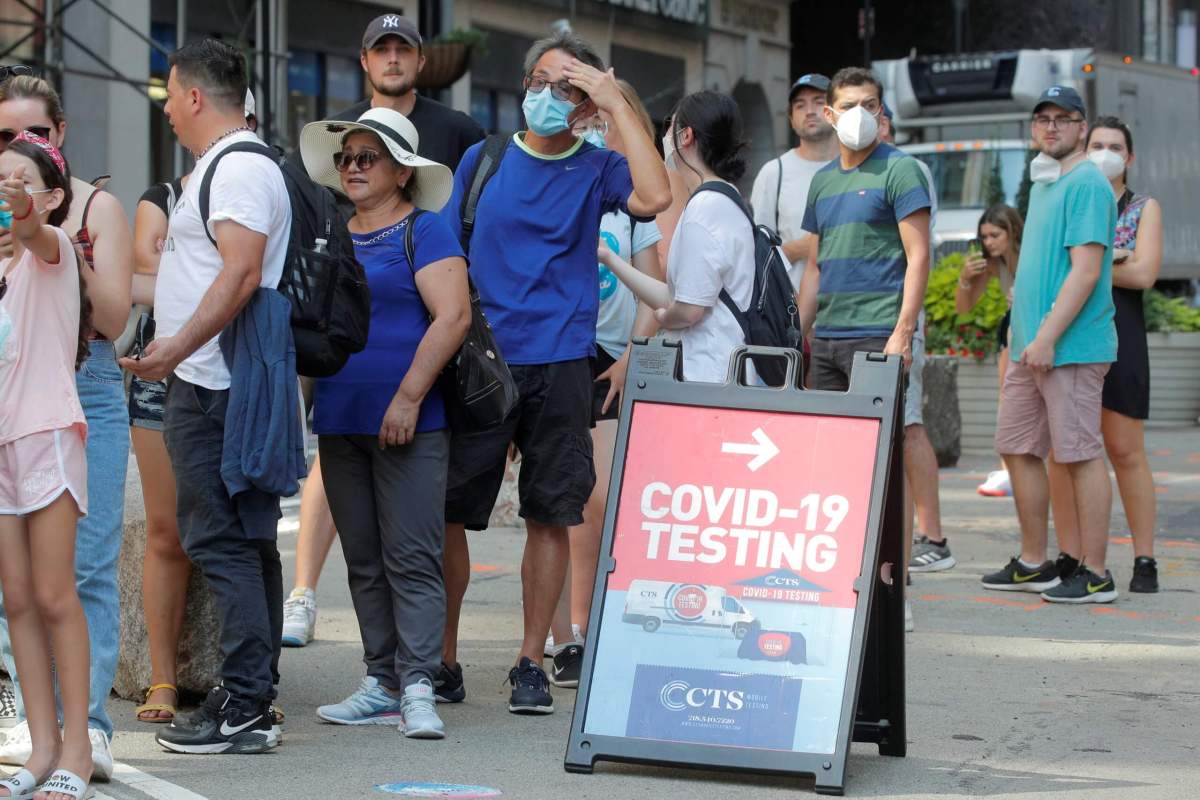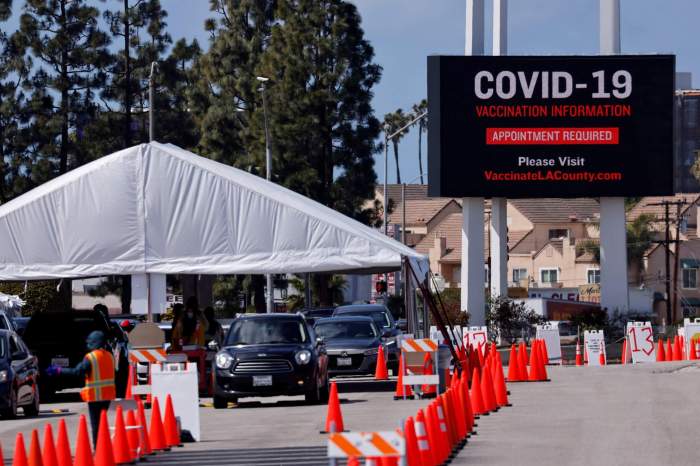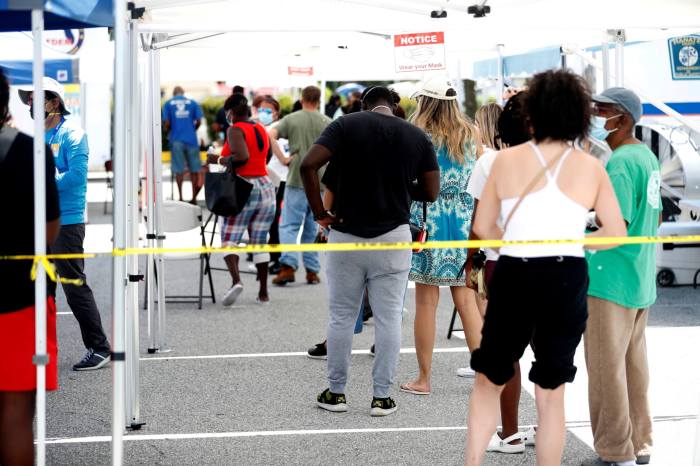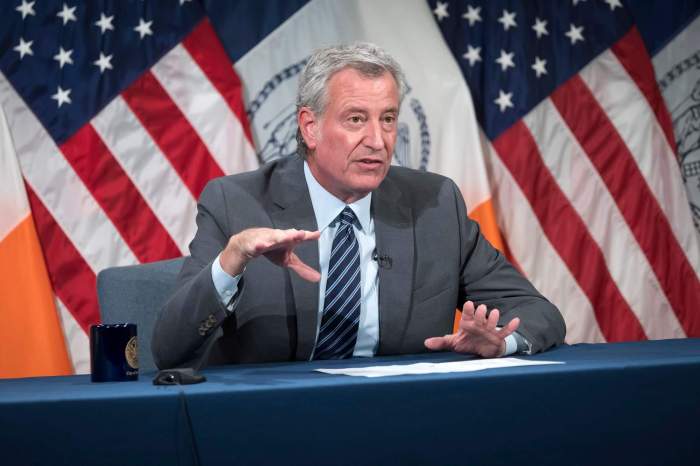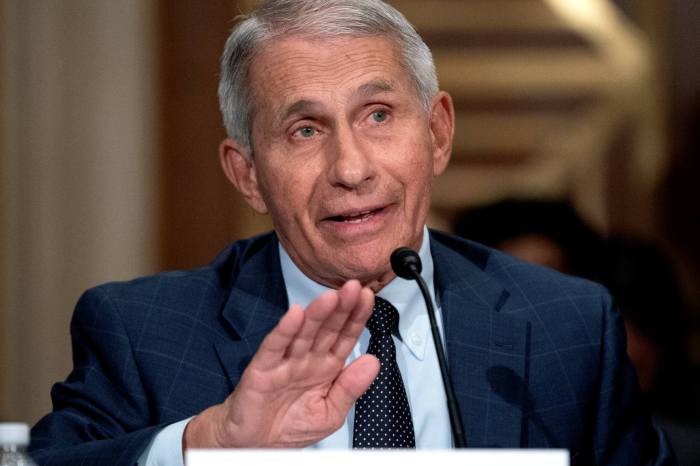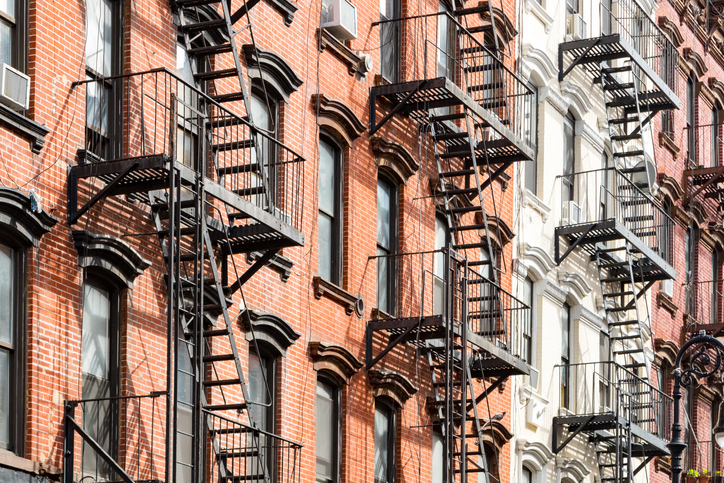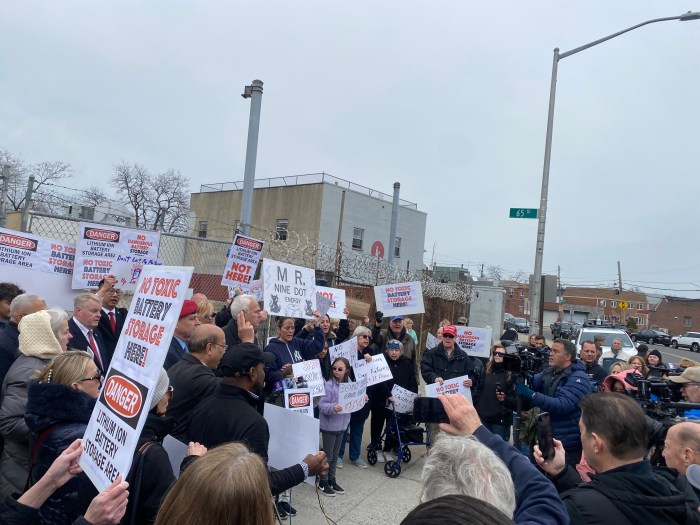Every major indicator New York City uses to track the spread of COVID-19 points to a stabilizing situation across the Five Boroughs — but the danger is far from over.
The latest New York City Department of Health and Mental Hygiene data revealed that the percentage of New Yorkers testing positive for COVID-19, and the hospitalization rate, continues to decrease. Over the last 28 days, the daily positivity rate stands at 4.14%,while over the past week, an average of 77 people have been hospitalized per day.
This third wave of COVID-19 cases in the Five Boroughs can be largely blamed on the highly-contagious, very potent Delta variant of the virus, which the Health Department says accounts for about 97% of all new infections.
At past points in the pandemic, a positivity rate over 4% spelled serious trouble within the city, causing hundreds of daily COVID-19 cases, and dozens of hospitalizations and deaths each day.
But the situation is greatly improved thanks to the COVID-19 vaccine.
Close to 5.4 million New Yorkers have had at least one dose of the COVID-19 vaccine, and more than 4.8 million residents — accounting for 58% of the city’s population — are now fully vaccinated against the virus.
This not only has helped slow the spread of COVID-19, but also limit the number of hospitalizations — as the overwhelming majority of vaccinated individuals who contract COVID-19 wind up asymptomatic or suffering just mild illness.
As the de Blasio Administration reported last week, just 0.33% of all vaccinated New Yorkers tested positive for COVID-19. On the flip side, 97% of all COVID-19 hospitalizations have involved unvaccinated individuals, according to city Health Commissioner Dr. Dave Chokshi.
Still, there are plenty of COVID-19 hot spots across the Five Boroughs. Between Aug. 19-25, five ZIP codes registered 7-day positivity rates higher than 7% — the most found in Breezy Point, the summer community at the western tip of the Rockaway Peninsula in Queens.
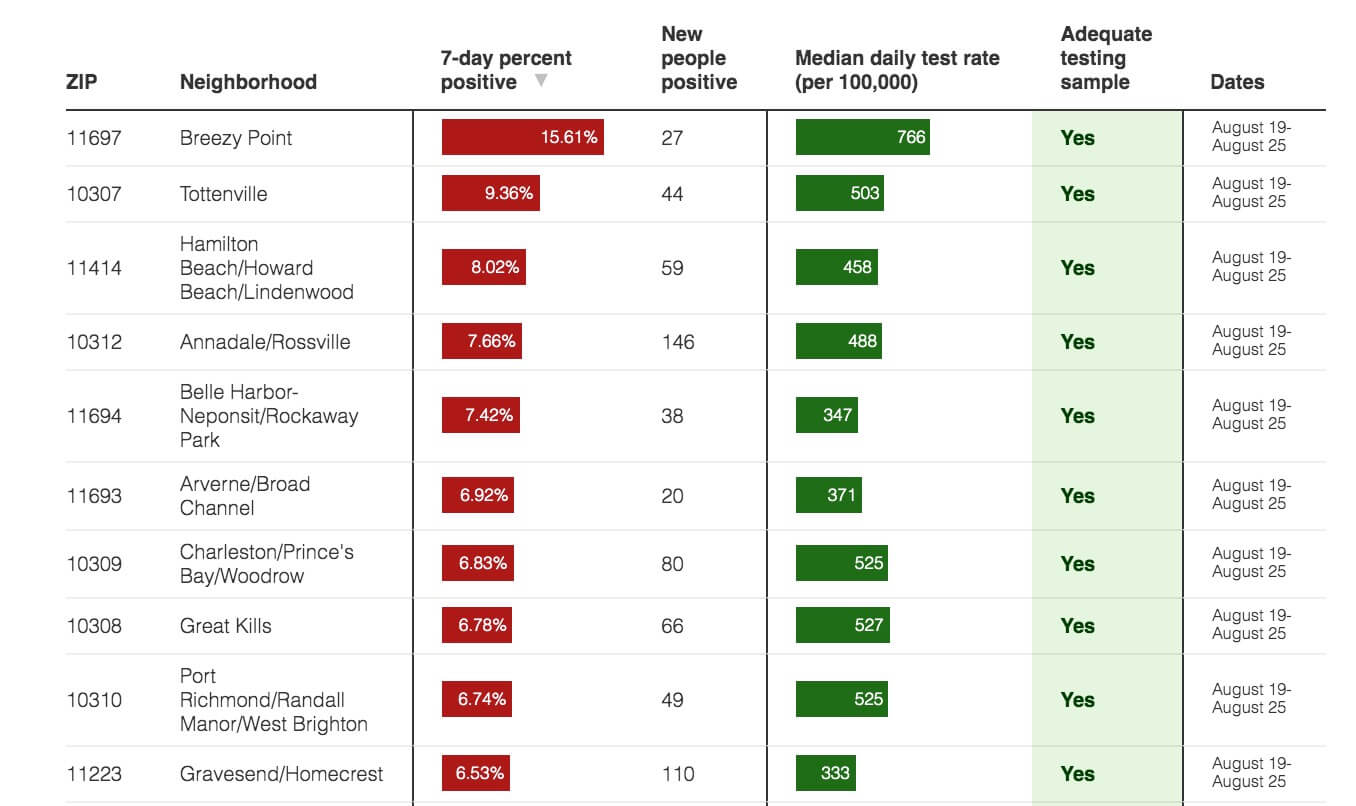
Breezy Point checked in with an astonishing 15.61% 7-day positivity rate, with 27 new cases identified between Aug. 19-25. Ironically, the area has high vaccination rates; 89% of its 3,393 residents have had at least one dose, and 82% of the populace is fully vaccinated.
However, the same could not be said for the nine other areas of New York City with the highest 7-day positivity rates between Aug. 19-25, each of which had vaccination rates under 60%.
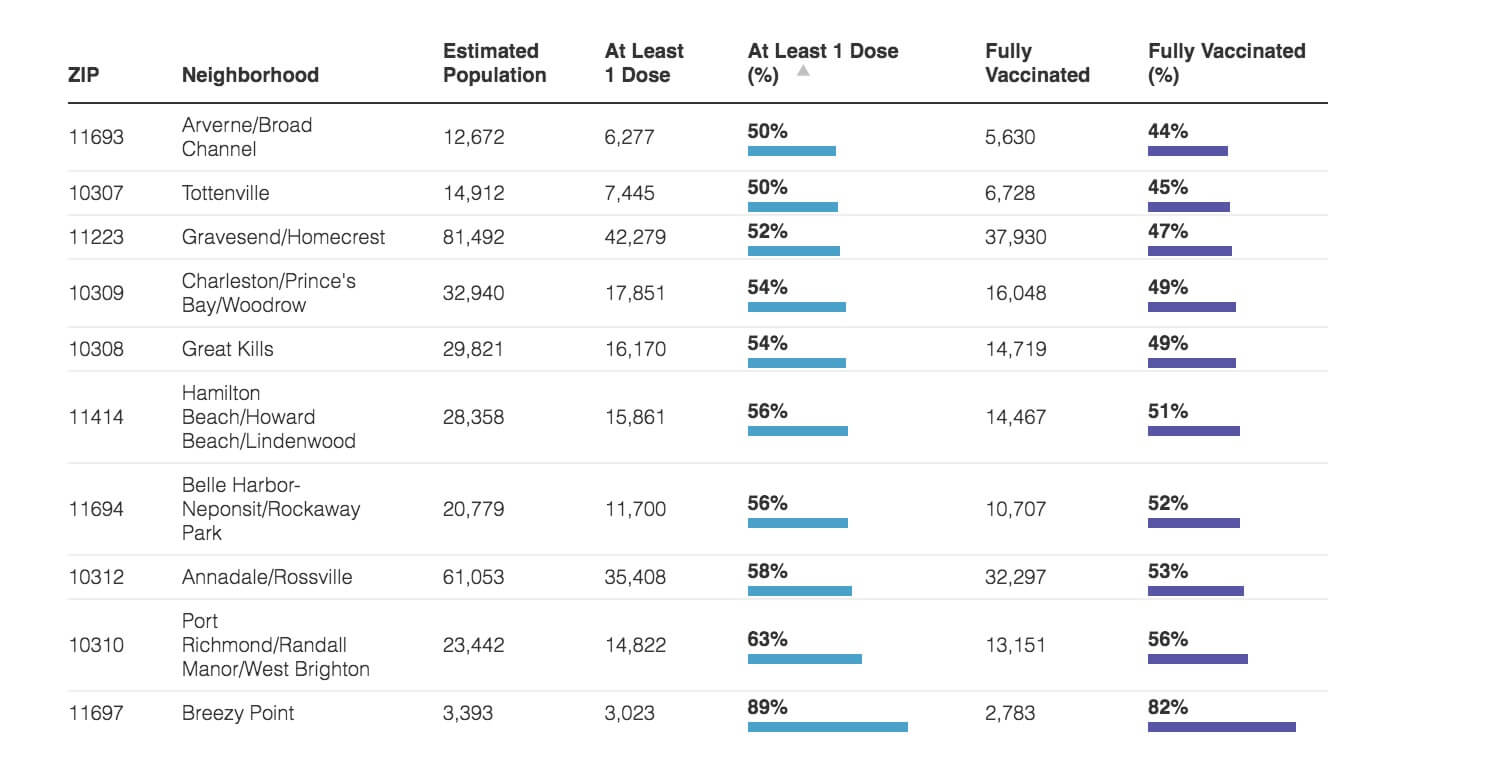
Meanwhile, the city continues to struggle to boost vaccination rates in the 10 lowest areas of New York City — though progress is being made.
Just three ZIP codes now have fully vaccinated rates below 40%: Edgemere/Far Rockaway, Queens (11691, 37%); Borough Park, Brooklyn (11219, 39%); and Bedford-Stuyvesant/Ocean Hill/Brownsville, Brooklyn (11233, 39%).
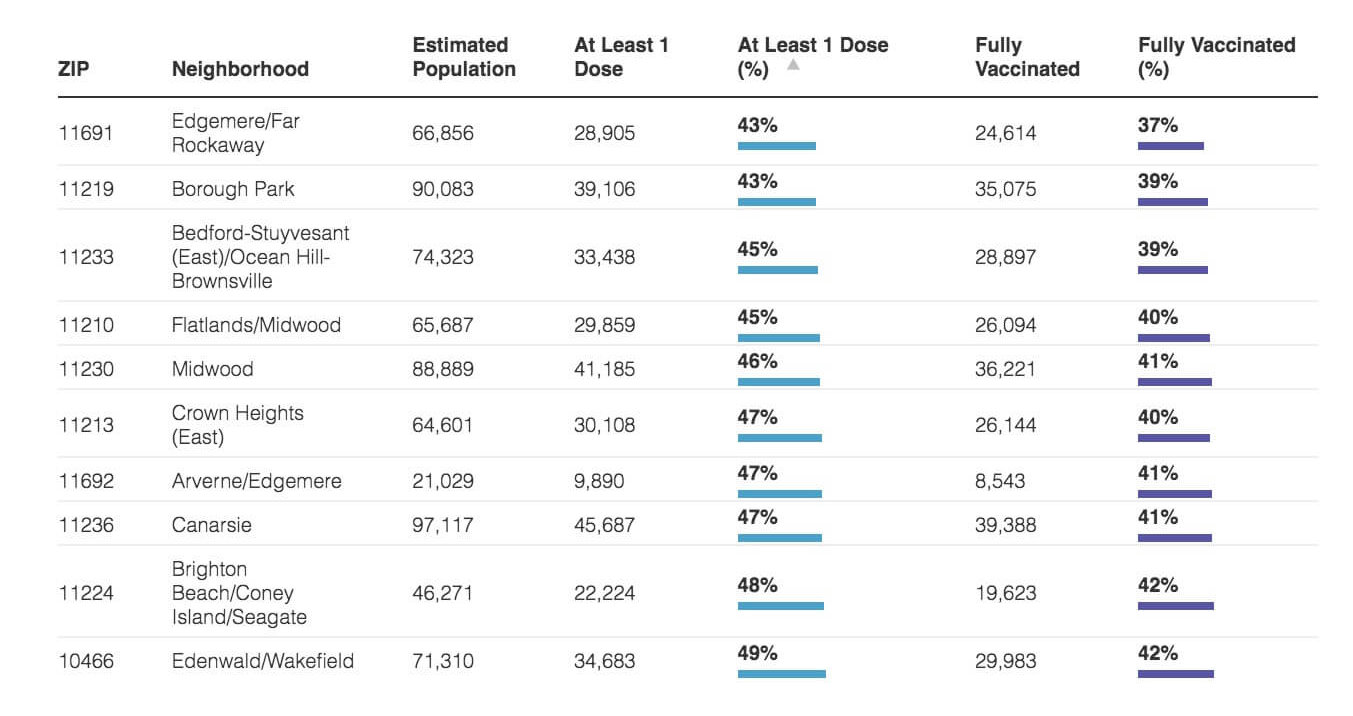
As for the spread of COVID-19 in these low-vaccinated areas, the latest Health Department data indicates moderate transmission — with the areas logging 7-day positivity rates between 3.5% and 5.83%. But four of these areas had 100 or more new COVID-19 cases between Aug. 19-25 — with Bedford Stuyvesant/Ocean Hill/Brownsville leading the way at 140 new infections.
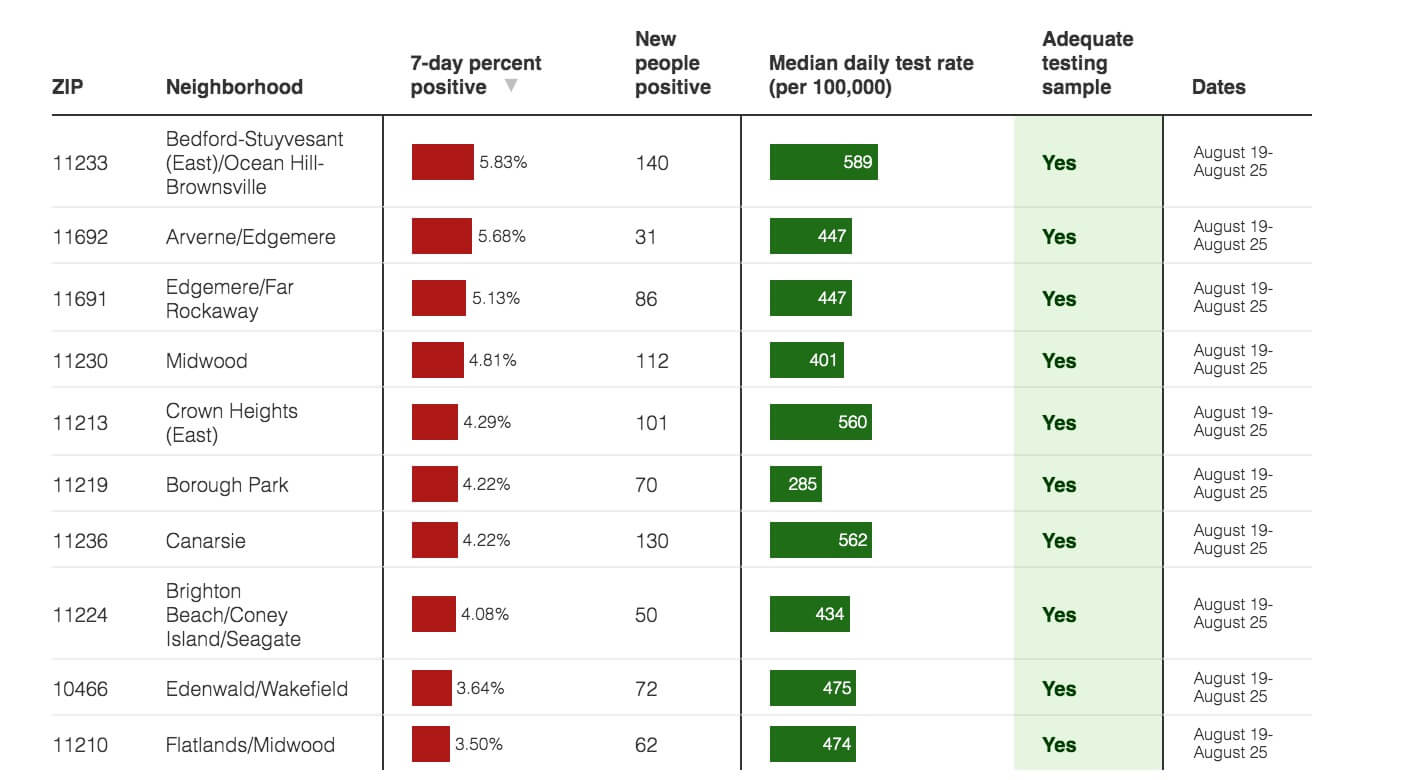
Despite the progress made and the apparent flattening of the latest curve, New York City’s COVID-19 situation remains precarious thanks to the spread of the Delta variant and continued vaccine hesitancy. With Labor Day, Rosh Hashanah and the start of the new school year approaching, the city could face a fresh round of new cases in September if unvaccinated New Yorkers aren’t careful, and don’t roll up their sleeves to get the vaccine.



